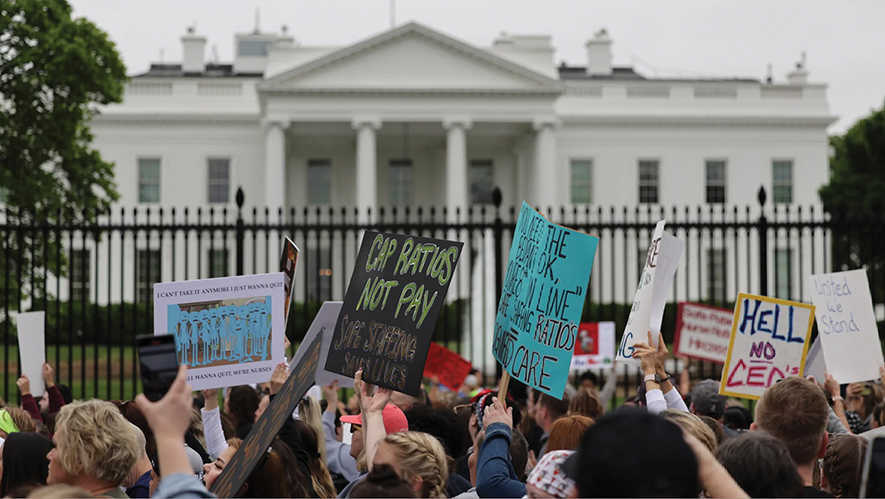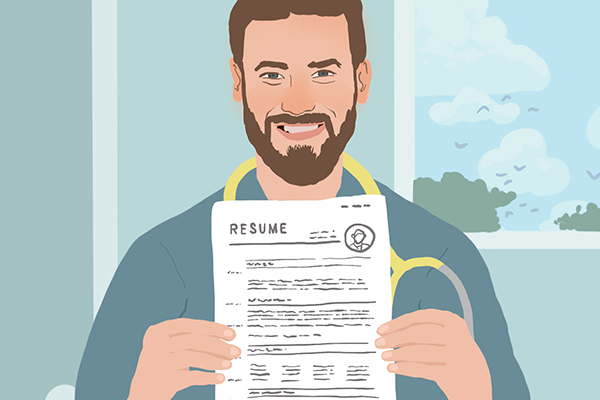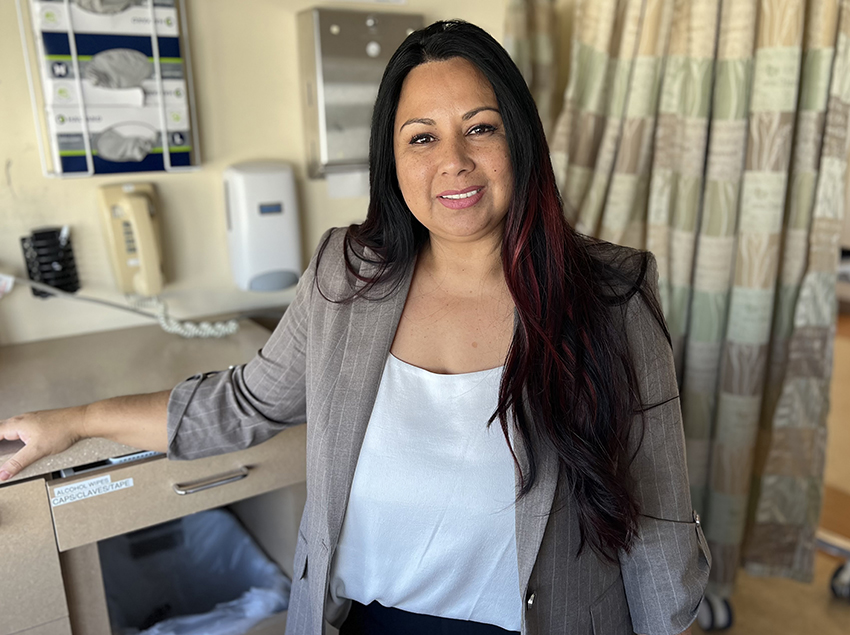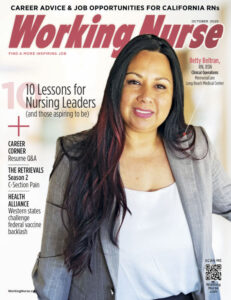Nursing & Healthcare News
Nurses March on Washington
Demonstrators advocate for federal legislation to better protect nurses

In May 2022, nurses took to the streets of Washington, D.C. to call for better working conditions — including federal rules on nurse staffing and protection from workplace violence.
Pandemic Exacerbates Ongoing Issues
The overlapping demonstrations, which began outside the White House in the morning of May 12, involved thousands of nurses from numerous different grassroots organizations, including The Nurses’ March, National Nurses March and NursesTakeDC (which is led by Show Me Your Stethoscope).
Although the demonstrations were at least in part a response to the ongoing pandemic and the toll it continues to take on nurses, many of the issues are ones that have concerned nurses for years, including workplace violence and safe staffing.
The latter issue is a problem that the pandemic has greatly exacerbated. Some of the nurses who attended the demonstrations say they’ve been asked to care for as many as 10 high-acuity patients at time, ratios that carry significant risks for patients and nurses alike.
California Stands Alone on Staffing Ratios
Although at least five other states are currently considering or have recently considered legal limits for patient-nurse ratios, California remains the only state that has actually enacted such a requirement.









